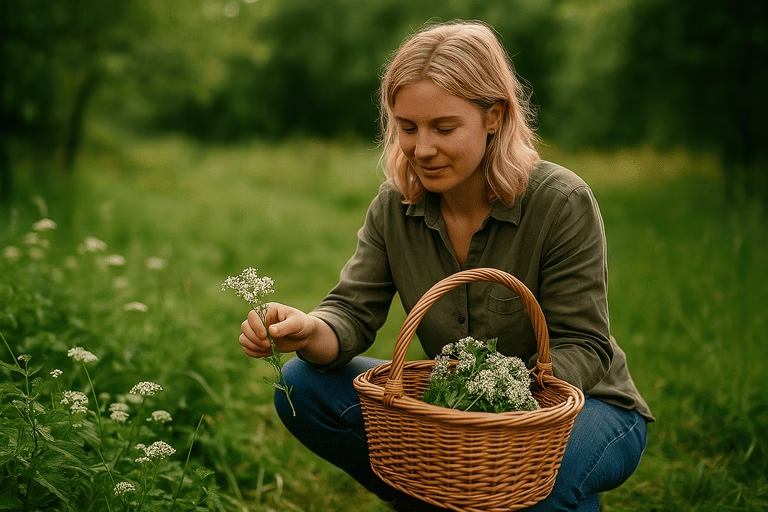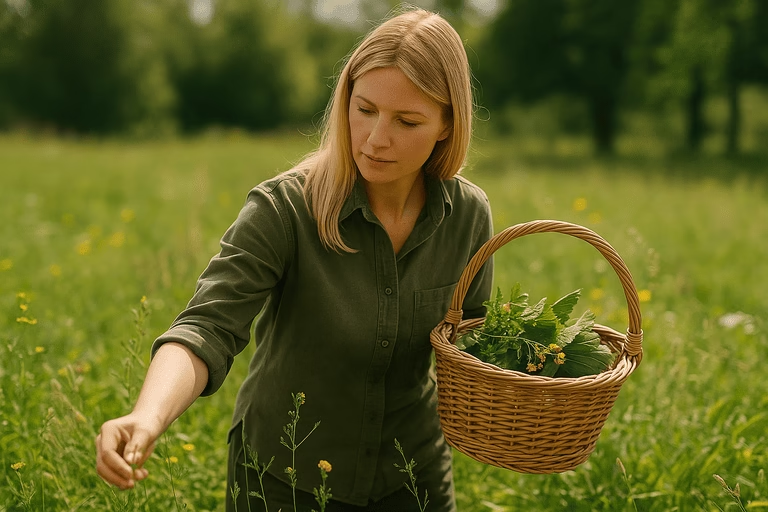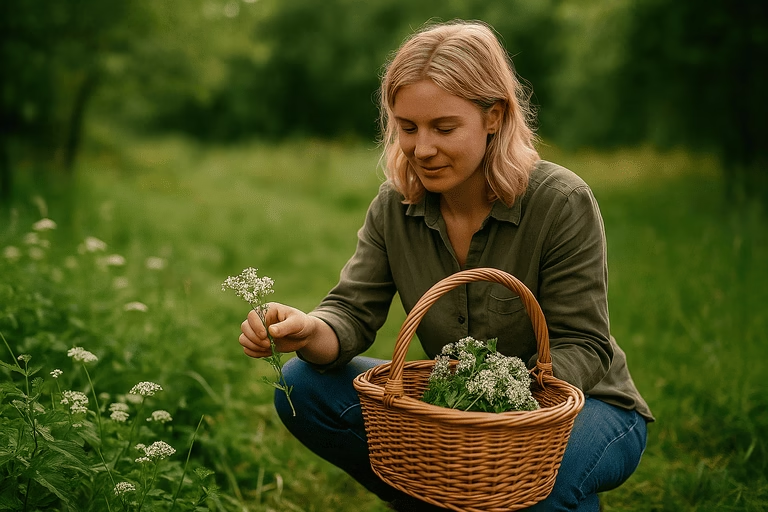Foraging is more than a survival tactic—it’s a way to reconnect with nature, reduce dependence on commercial goods, and learn to live sustainably. One of the most essential tools for anyone engaging in this practice is the foraging basket. Far from being just a container, this humble piece of gear plays a central role in the success of every gathering trip.
The purpose of a foraging basket goes beyond carrying plants and fungi. It’s designed to protect delicate items like berries, mushrooms, and leafy greens, allowing airflow and minimizing crushing. Unlike plastic bags that trap moisture and speed up spoilage, a basket made from natural materials helps preserve freshness. In addition, its structure helps you separate different species easily while you walk, making your collecting process much more efficient.
Foraging baskets come in various shapes and sizes, tailored for different environments. In mountainous terrain, a lightweight basket is key to ease mobility, while in dense forests, a deeper one helps avoid spillage over rough ground. Therefore, choosing the right basket isn’t just about looks—it’s about performance, safety, and practicality. Whether you’re a weekend forager or a seasoned bushcraft enthusiast, your basket is a reflection of your skills and preparation.
Choosing the Right Foraging Basket for Your Environment
When preparing for a foraging expedition, selecting the appropriate foraging basket is as important as knowing where to go. The ideal basket should complement both your environment and the types of wild foods you plan to collect. For instance, those who focus on mushrooms need a basket that’s shallow and wide to prevent bruising and allow each specimen to breathe. However, people who gather roots or wild apples might prefer a deeper model with reinforced sides.
Wild Food as a Gateway to Self-Reliance and Natural Living
Material is another important consideration. Baskets made from willow or rattan offer excellent durability and natural breathability. In addition, they’re environmentally friendly and lightweight, which makes them ideal for long treks through rugged landscapes. Handle design also affects functionality. A well-placed handle should not interfere with your walking stride or cause fatigue over long distances. Therefore, testing your basket before heading out into the field is just as critical as planning your route.
Seasonal conditions should also factor into your choice. In wet or humid weather, a tightly woven basket helps shield your harvest from excess moisture. Meanwhile, during hot, dry months, open-lattice weaving encourages air circulation. Every small detail matters when it comes to preserving your hard-earned wild ingredients, so invest time in finding or crafting a basket that supports your style and needs.

How to Craft a Traditional Foraging Basket by Hand
Crafting your own foraging basket is not only a valuable bushcraft skill but also a meaningful way to connect with traditional knowledge. The process begins with sourcing natural materials, such as willow branches, reeds, or grapevines. These should be pliable enough to bend without breaking, yet strong enough to hold weight. Soak them in water overnight if they are too brittle. Once they are ready, start by building a strong circular base. This foundation determines the strength and shape of the entire basket.
Next, weave the upright ribs to form the skeleton of the walls. Begin wrapping your horizontal pieces through these ribs in an alternating pattern, pulling them tight with each pass. This requires patience, but the results are worth the time. In addition, weaving teaches attention to detail, hand coordination, and rhythm—skills that are useful far beyond the crafting process.
Finally, secure a solid handle using thicker branches, then bind them tightly with cordage or even strips of bark. The handle should be strong, smooth, and comfortable to hold for hours. Crafting your own basket is deeply satisfying because it becomes a reflection of your environment, your effort, and your intent. In a world dominated by mass-produced tools, something handcrafted is both rare and empowering.
What Essentials Should Go Inside Your Foraging Kit
Your foraging basket is the centerpiece of your kit, but it shouldn’t be the only item you carry. To forage responsibly and efficiently, you need a few tools and supplies that support your journey from start to finish. For example, a sharp, foldable knife is essential for harvesting stems without damaging the parent plant. In addition, a compact brush can help clean off dirt or insects from roots and fungi before placing them in your basket.
Nature Tips for Safe and Enjoyable Adventures
You should also bring paper or cloth bags to separate species, especially when dealing with mushrooms or strong-smelling herbs that may contaminate others. Don’t forget a trusted field guide with photos or drawings, ideally waterproofed, so you can confirm plant identity on the spot. For longer trips, a water bottle, snacks, gloves, and a lightweight map will round out your toolkit. Each of these items should have a designated space inside or alongside your foraging basket, making it your mobile base of operations.
Carrying the right tools reduces waste, ensures safety, and helps protect the ecosystems you interact with. After all, responsible foraging isn’t just about what you collect—it’s also about how you collect it. And having an organized basket packed with care speaks volumes about your respect for the natural world.

Seasonal Foraging and Adapting Your Basket Use
Nature’s pantry shifts with the seasons, and so should your gear. Spring brings tender shoots, wild asparagus, and dandelion greens—perfect for a wide, open-top foraging basket that allows you to lay your finds gently without crushing them. In summer, you’ll find berries, flowers, and soft fruits, which need shallow but well-ventilated baskets to prevent bruising. Autumn introduces tougher items like nuts, roots, and mushrooms, requiring deeper and stronger containers.
In addition, your foraging strategy changes with the climate. For example, early morning harvests in summer are best because the heat hasn’t yet wilted plants. Meanwhile, autumn foraging often happens in damp conditions, so you’ll need to air-dry your basket thoroughly afterward. Transitioning your gear with the seasons shows an advanced understanding of your environment and helps preserve your tools long-term.
Foraging during winter is possible, though limited. Conifer needles, rose hips, and certain tree barks become valuable resources. These require smaller baskets, often with covers or linings to keep contents dry and protected from snow. By adapting your basket and technique, you extend your foraging practice year-round, staying in tune with nature’s subtle rhythms.
Safety Tips for Ethical and Smart Foraging
Heading into the wild with a clear understanding of safety is non-negotiable. Before you begin collecting, make sure you’ve positively identified the plant or fungus. Misidentification can lead to severe illness or even death in extreme cases. Therefore, always double-check with a guidebook or a mobile plant ID app. Better yet, forage with someone experienced until you feel confident in your knowledge.
In addition, pay close attention to the environment where you’re harvesting. Avoid areas near roads, polluted waters, or agricultural fields that might contain pesticides or heavy metals. Stick to clean, wild spaces whenever possible. Bringing gloves and alcohol wipes can also help prevent contamination and make your outing safer and more comfortable. Your foraging basket might be the most visible part of your gear, but it’s your preparation and judgment that truly define your success and safety.
Teaching Kids and Beginners the Joy of Foraging
Foraging can be a fantastic family activity or introduction to outdoor living for beginners. Start with common, easily identifiable plants like wild strawberries, clover, or blackberries. Teaching children to observe leaf shapes, colors, and growth patterns helps develop their attention to detail and appreciation for the natural world.
Why Wild Squirrel Food Plays a Vital Role in Natural Ecosystems
In addition, allowing kids to carry their own small baskets empowers them to feel independent and responsible. Supervision is key, of course, especially around unknown plants or rough terrain. Turn your outing into an interactive lesson by incorporating games such as “Who can find three different leaf shapes?” This approach makes the experience enjoyable and educational, creating positive associations with nature from a young age. Over time, your child’s simple beginner’s basket may evolve into a confident, self-packed foraging basket as their knowledge and confidence grow.

Preserving and Using Your Harvest at Home
Once you’ve successfully gathered your wild edibles, it’s time to make the most of them. Many plants and fungi spoil quickly, so handling and storing them properly is critical. Begin by sorting your harvest. Rinse leafy greens gently and dry them on a clean towel. Mushrooms should be brushed clean rather than washed, as too much water can damage their texture.
After that, decide what to use fresh and what to preserve. For instance, herbs can be air-dried, roots can be pickled, and berries can be frozen or turned into jam. Dehydrators are a great investment if you forage frequently, especially for drying mushrooms and wild fruit. Creating meals or remedies from what you’ve gathered is one of the most rewarding parts of the process. Foraging doesn’t end when your foraging basket is empty—it continues in your kitchen, your medicine cabinet, and even your gift-giving.
Connecting with Nature Through Seasonal Routines
Many experienced foragers find that returning to the same places season after season builds a deeper relationship with nature. You begin to notice the subtleties—how early spring rains bring out wild greens, how dry summers affect berry size, and how fungi respond to the first chill of fall. Documenting your findings in a nature journal or app creates a personal database that makes every future outing more effective.
In addition, connecting to these rhythms offers mental clarity and emotional grounding. Foraging becomes a form of mindfulness, where each step through the woods or field is filled with purpose and calm. You no longer see plants as background; they become familiar faces, each with a name, a use, and a story. The foraging basket you carry is more than a tool—it’s a symbol of that connection and the life you’re cultivating with nature’s help.
Quick Recap
Let’s summarize the key points we’ve explored in this complete guide to using a foraging basket effectively and responsibly.
We began by identifying the foraging basket as an essential part of any outdoor gathering kit. Unlike other containers, it offers ventilation, structure, and ease of use, making it ideal for collecting delicate wild edibles. Then, we explored how to choose the right basket for your terrain, climate, and harvest type. We also covered how to handcraft your own basket from natural materials, a sustainable and rewarding skill.
Next, we discussed the essential tools to keep inside your foraging basket, and how those tools complement your gathering process. We emphasized the importance of seasonal adaptations—not just in what you collect, but in how you carry and protect it. Safety tips and ethical foraging practices followed, highlighting the need for accurate plant identification and environmental awareness.
We then explored how to introduce children and beginners to foraging, transforming it into a lifelong skill and source of joy. Finally, we examined what happens after the harvest—preserving, preparing, and honoring your finds—and the deep, ongoing relationship you can develop with nature through consistent, seasonal foraging.
When used properly, a foraging basket becomes much more than a container. It’s a companion, a teacher, and a symbol of your respect for the land. Carry it with pride, use it with care, and let it guide you into a richer, more grounded way of living.

